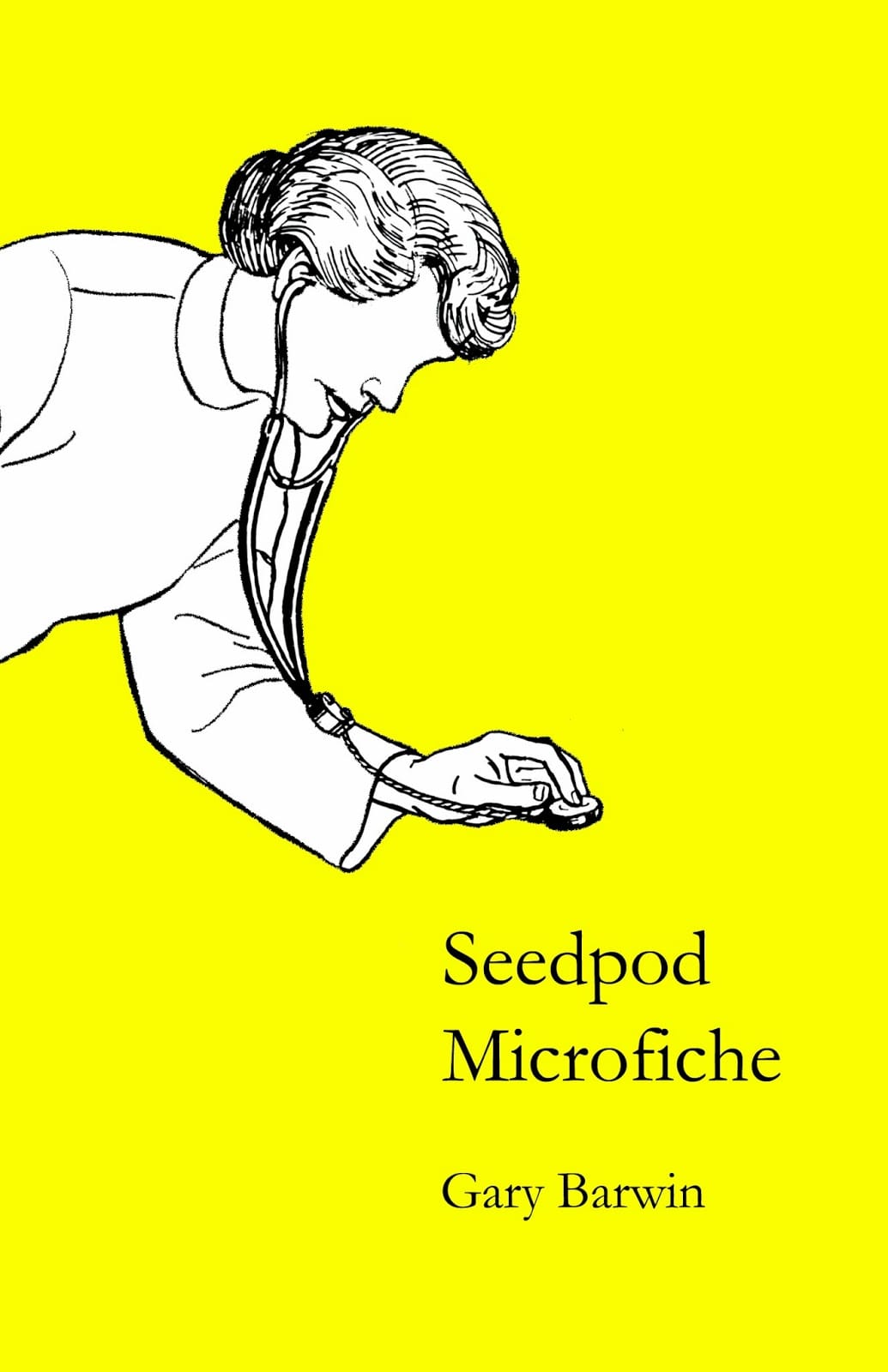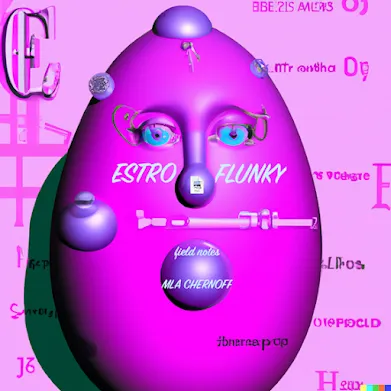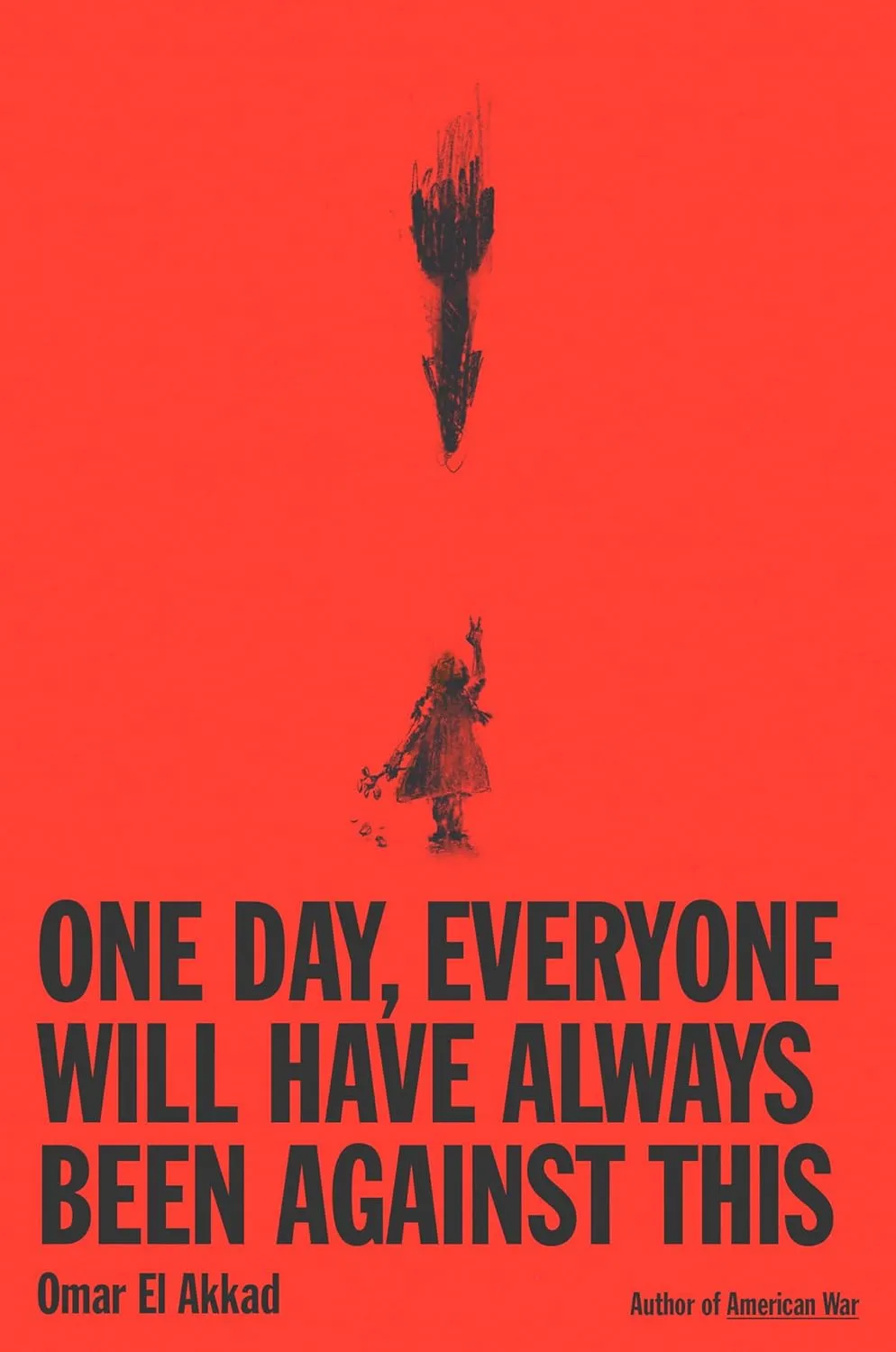Gary Barwin, Seedpod Microfiche
What is the algebra that reverse engineers Barwin’s paperweight enigmas?

The cover and back feature line drawings of faceless individuals bearing stethoscopes in an outstretched hand, a grandma-type figure on the front and a Lord Byron-looking type on the back (under a prominent $4 price tag), turnt away from the device being placed under his left clavicle. The title and author name appear in a lovingly unassuming serif, one word on each line, with title case capitalization, and author name all on one line, roughly 6-8px smaller. Stark inkblack on yellow.
The first of six poems has literary resonances from the first line. Yet, I turn away from them to take what’s left without allusion and nostalgia, not to be a literalist or purist, but to appreciate the imagery for what it is rather than what may or may not indirectly imply or illicit: a grass blade, it begins.
The thing about Gary Barwin is his affinity for assonance. There are a handful of other Canadian poets who sometimes pull off what he’s doing on this single page (and if you’re an optimistic judge, even myself, by inadvertent imitation to some extent). Albeit, it’s this rhythm that yanks you into the rut of a groove that combines the sounds of the words with the images it evokes.
Take a look at the logo for my blog, for example. For a minute, Leigh Kotsilidis and I had discussed whether or not to use ol’ timey medical texts (and microfiche!) to achieve the sort of dark academia vibe I was weighing in my head for the branding of this site. I’m glad we didn’t end up there per se, but you have to agree it is a vibe that exists. It’s the same aesthetic as the line-drawn figures on the covers of Barwin’s chap here in my hand right now. Collage removed from the chaos of collage, just a paparazzi flash of clinical press clippings removed from their historical context.
When you hear the title of the chapbook revealed in this opening poem, then, it all sort of clicks in the nebulousness of it all, without feeling like equivocation of any kind: seedpod, microfiche of twilight/a dewdrop observed, a cobweb/a weed-wrapped tongue or treetop.
The second page over, the dissonance encroaches one step further into your experience of reading it for the first time. The words slightly change, one line off, one syllable off, one noun replaced by one verb, but an evocative one, one that might appear with a red squiggle in your word processor or draft email message: the sewn seed is dropped twilight/microfiche an observation tower for wings/weeds, a rupture of the tongue. The mystery does not reveal itself even as it unfolds.
Next page: now lines are more noticeably moving to form a sextet where before there was couplet or triplet, and the ersatz of sounds, nouns and syntax takes on a new valency or prime order. What is the algebra that reverse engineers Barwin’s paperweight enigmas? Their unassumingness certainly does not warrant the impression we need to don the tinfoil hat of Pascalian curiosity to investigate. Let the puzzle remain unsolved. It is not cryptographic, but cryptic for the sake of beauty, not for the sake of being hammered out for good. Format adds square brackets here, as though instructional or journalistic.
Fourth of six poems: seed is the mitosis of sleep. Reminds me of a Nas lyric: I never sleep, cause sleep is the cousin of death. What is a mitosis? Something to do with mitochondria, the powerhouse of the cell? Cytology, the part usually followed by cell division, from Ancient Greek mitos, thread, synonym karyokinesis. Division of a cell nucleus in which the genome is copied and separated into two identical halves. An older dictionary (my beloved Annandale) offers a briefer picture: a somewhat complicated process.
Fifth poem, finneganation nearly complete, wake in progress: the truck, only four, asks/what else would stars do but constellate?
Then, further down the page: the way a scientist follows/an atom’s breath//love like a stethoscope/with neither ears nor heartbeats.
The final and sixth poem, perhaps the circumnavigation, the all-the-way-rounding off of the last decimal place in this irrationally derivated equation of a poem sequence: dusk on the owl of the tongue, it proffers.
And I was right: a stethoscope whose end/is its beginning/and whose beginning/is also twilight.
Bibelotages Newsletter
Join the newsletter to receive the latest updates in your inbox.



